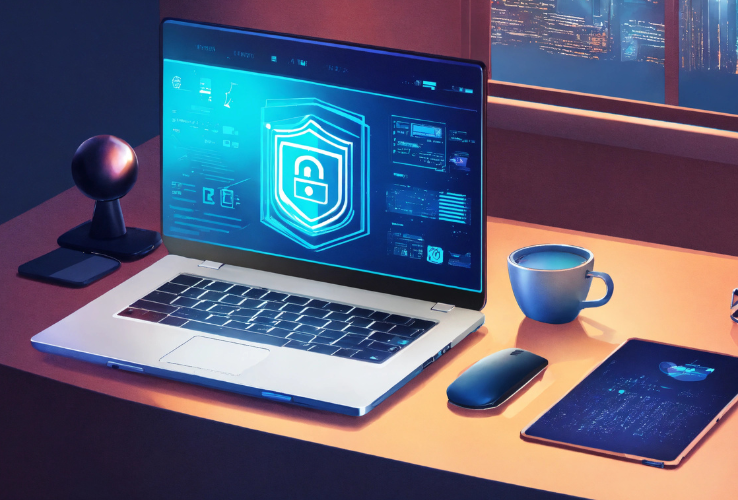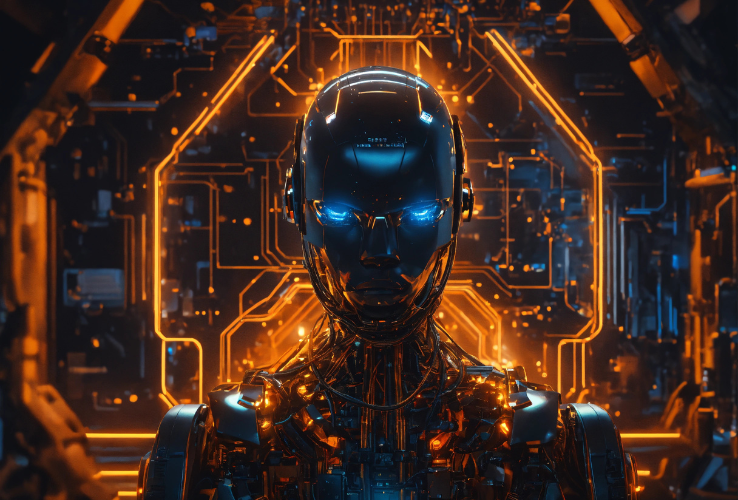AI-Driven Threat Detection: Revolutionizing Cybersecurity in a Rapidly Evolving Landscape
The battlefield of cybersecurity has undergone a seismic shift. Gone are the days when firewalls and antivirus programs could adequately protect enterprises from malicious actors. The current digital ecosystem, with its interconnected systems, growing data volumes, and increasingly sophisticated attacks, has forced organizations to rethink their approach. AI-driven threat detection has emerged as a revolutionary solution, offering a proactive, intelligent layer of defense that evolves alongside the threats it combats.
This transformation in cybersecurity isn’t just a technological leap; it’s a fundamental reimagining of how enterprises can secure themselves in an environment where attackers innovate as quickly as defenders.

The Evolving Threat Landscape: Why AI Is Necessary
The modern cyber threat landscape is unrelenting. Threat actors now deploy automated tools, exploit vulnerabilities with precision, and employ advanced tactics such as polymorphic malware, which changes its structure to evade detection. In parallel, businesses generate staggering amounts of data, making it nearly impossible for human teams to analyze and respond to potential threats in real-time.
Compounding these challenges is the issue of scale. Enterprises often have thousands of endpoints, cloud environments, and internal systems—all of which are potential entry points for attackers. Legacy tools like signature-based antivirus software are unable to keep up with these dynamic, fast-evolving risks. Security teams are left overwhelmed by a flood of alerts, most of which are false positives, making it harder to identify genuine threats.
AI-driven threat detection addresses these issues head-on. By applying advanced machine learning and pattern recognition algorithms, it enables systems to identify anomalies, detect unknown threats, and respond in ways that were previously unimaginable.
How AI Detects and Mitigates Threats
At its core, AI-driven threat detection is about augmenting human capabilities. Unlike traditional tools that rely on pre-defined rules or known attack signatures, AI-based systems learn from data, identify patterns, and adapt to emerging threats. This approach makes them uniquely suited to handle the scale and complexity of today’s cybersecurity challenges.
AI tools are particularly effective at:
- Analyzing Massive Data Volumes: Security systems produce enormous amounts of log data. AI sifts through this information to detect unusual activity—such as a sudden spike in file access or data transfers—that could indicate an ongoing attack.
- Identifying Anomalous Behavior: Machine learning algorithms create profiles of “normal” behavior for users, devices, and applications. When deviations occur—such as an employee accessing sensitive files outside regular hours—the system flags them for review.
- Responding in Real-Time: Beyond detection, AI systems can take immediate action to mitigate threats. For example, they can isolate compromised endpoints, block malicious IP addresses, or shut down suspicious processes to prevent further damage.
Success Stories: AI in Action
The power of AI-driven threat detection isn’t just theoretical—it’s already transforming cybersecurity for organizations across industries:
- Financial Services: A global bank faced escalating phishing attempts targeting its customers. By deploying an AI-based detection system, it reduced response times from hours to seconds, minimizing potential losses and preserving trust.
- Healthcare: Hospitals and healthcare networks are prime targets for ransomware attacks. One provider used AI tools to monitor and protect its network, detecting an attempted ransomware breach before it could encrypt patient records.
- Retail: A multinational retailer integrated AI into its cybersecurity framework to safeguard customer payment data. The system identified unusual patterns in transaction data, leading to the discovery and neutralization of a botnet attempting to scrape sensitive information.

Challenges and Considerations
Despite its promise, AI-driven threat detection is not without challenges. Organizations need to carefully navigate these complexities to maximize its effectiveness:
- Implementation Complexity: Integrating AI into existing security frameworks can be technically demanding. It requires a solid foundation of clean, structured data to train models effectively.
- False Positives: While AI reduces false positives, it doesn’t eliminate them entirely. Fine-tuning algorithms to strike the right balance between sensitivity and accuracy remains critical.
- Adversarial AI: Cybercriminals are also leveraging AI to create more sophisticated attacks, such as malware capable of evading detection by mimicking normal system behavior.
- Expertise Gap: Many organizations lack the in-house expertise required to implement and maintain AI-driven systems, making partnerships with external cybersecurity providers essential.
Looking Ahead: The Role of AI in the Future of Cybersecurity
As cyber threats continue to evolve, AI is positioned to play an even more central role in cybersecurity. The integration of AI with other advanced technologies, such as blockchain and quantum computing, could unlock new levels of security. For instance, predictive analytics powered by AI could anticipate threats before they occur, enabling organizations to preemptively strengthen their defenses.
Furthermore, AI’s ability to learn and adapt will ensure it remains effective against future challenges, including the emergence of advanced persistent threats (APTs) and attacks on emerging technologies like IoT devices.
Conclusion: A Paradigm Shift in Cyber Defense
AI-driven threat detection represents a game-changing evolution in cybersecurity. By providing unparalleled speed, accuracy, and adaptability, AI enables organizations to stay ahead of increasingly sophisticated attackers. For enterprises, adopting AI isn’t just about protecting their digital assets—it’s about securing their future in a world where cyber threats are a constant.
As this technology continues to mature, the organizations that embrace it will set the benchmark for resilience and innovation in cybersecurity. In the face of ever-escalating risks, AI is not just an option—it’s a necessity.
